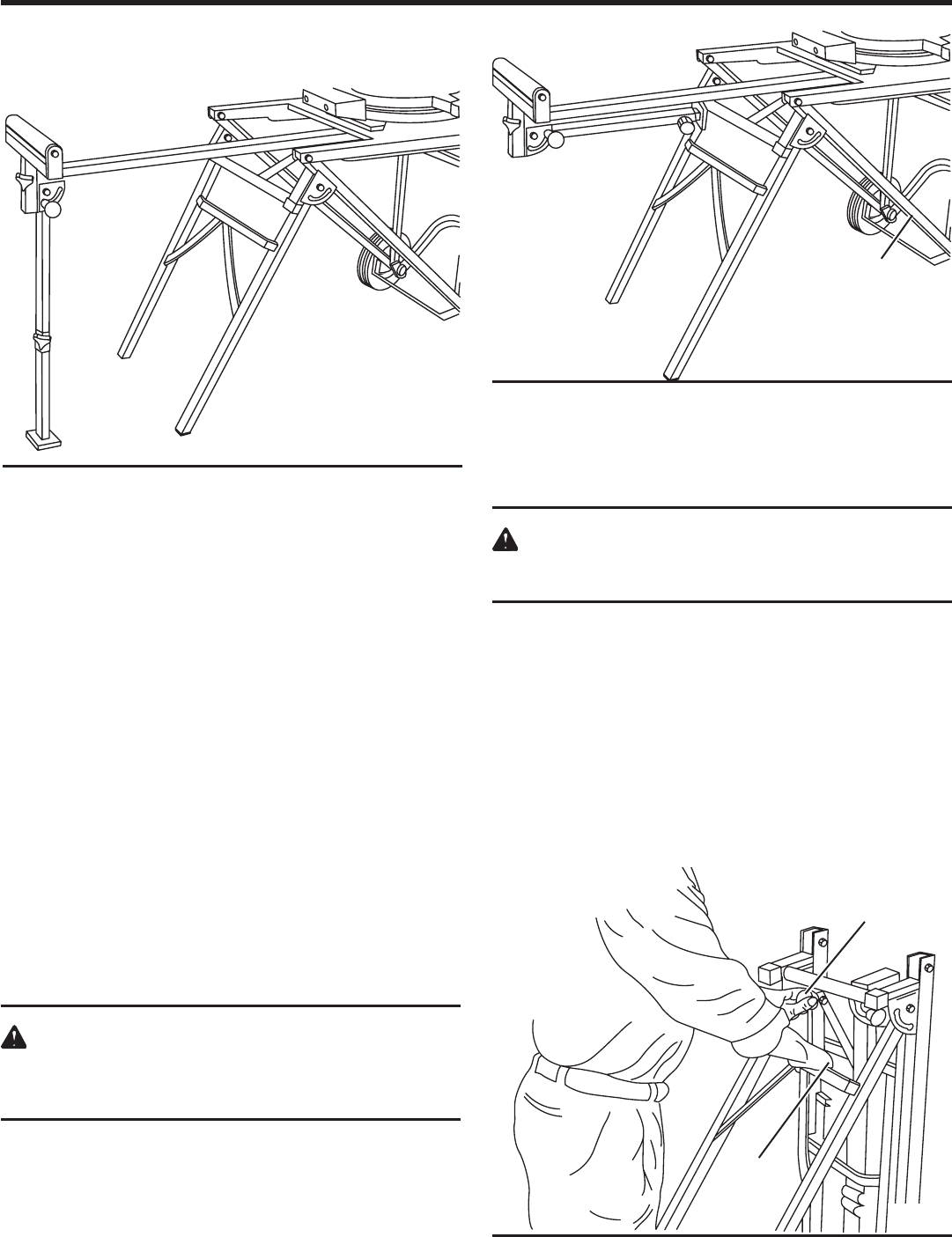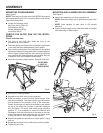
11
Before You Start
n Remove any workpieces, clamps or other accessories.
n Make sure miter saw is securely attached to the stand
per the instructions in this manual.
n If a miter saw is already assembled to the stand, make
sure to place the blade 90° to the table (if applicable),
miter the blade to the right as far as it will go, place the
blade in the “locked down” position, and lock all knobs
and levers.
FOLDING LEG AND TABLE
n Loosen the roller foot knob and slide foot extension up.
Tighten knob.
n Release locking pin and raise foot.
n Loosen the extension bar handle and slide extension
bar in towards table. Tighten extension bar handle.
n Repeat for the other side.
n At the wheel end of the stand firmly grab the lift handle/
lock lever and squeeze the lever.
n Fully lift table by the lift handle, then slowly lower table
down to the frame
WARNING:
To avoid serious personal injury when lifting, bend
your knees so you can lift with your legs, not your
back.
NOTE: You may need to adjust the speed at which you
bring up the table in order to get the leg to fold.
ASSEMBLY
n Lift stand into upright position pull out on the locking
pin, and swing the legs until they lock in place against
the bottom of the table.
n Make sure the stand will remain upright on its own.
CAUTION:
If the stand will not remain upright, store in the
horizontal position.
n The workstand can be moved by pulling or pushing.
To keep the workstand from tipping over, pulling the
unit is the preferred method when moving over a door
threshold or crack.
NOTE: If desired, with the help of a second person, the
foot of the stand may also be used as a carry handle as
shown.
If a sliding compound miter saw is mounted on the
workstand, it may be necessary to slide the power head/
blade assembly forward and lock in place when going
through doorways or other narrow openings.
LOWER THE
TABLE
LOCKING PIN
PUSH THE
LEGS
FOLDING AND MOVING WORKSTAND
See Figures 12, 13, and 14.
Fig. 12
Fig. 14
Fig. 13


















